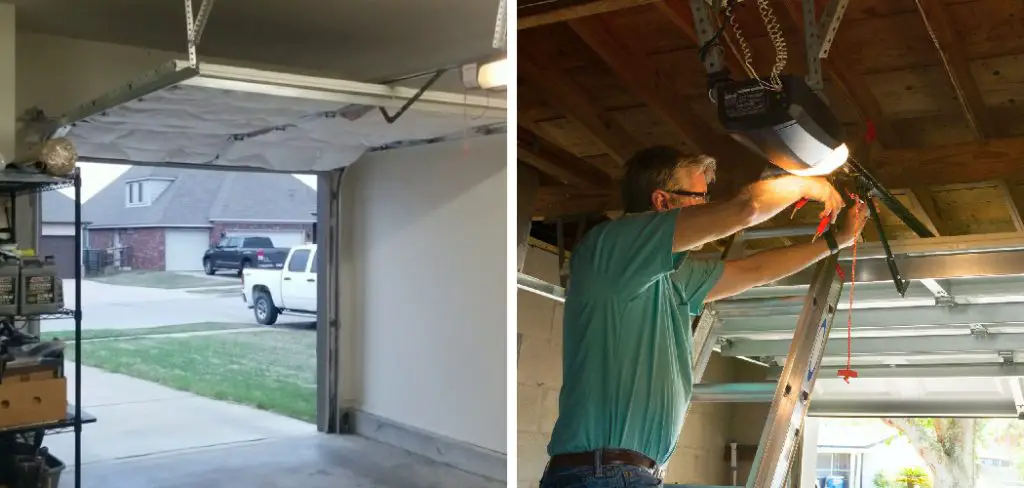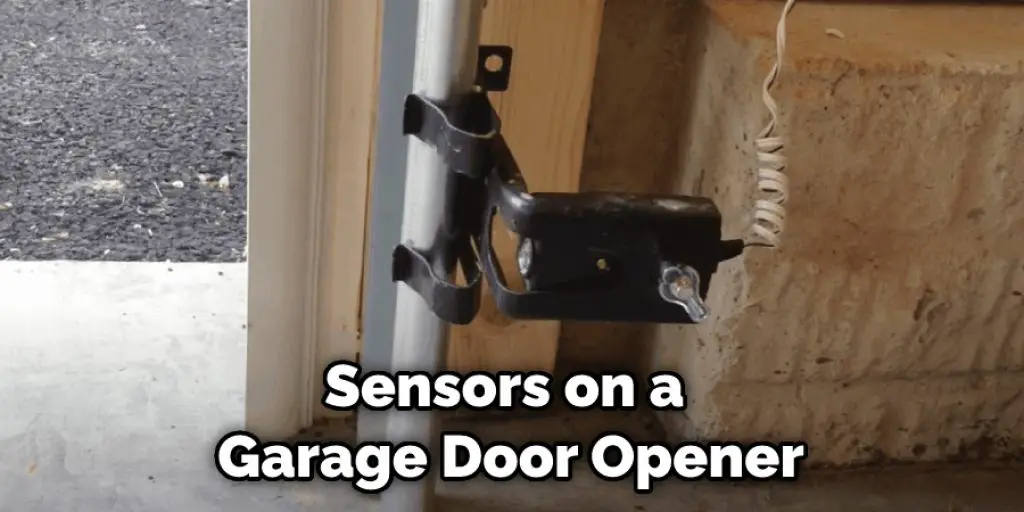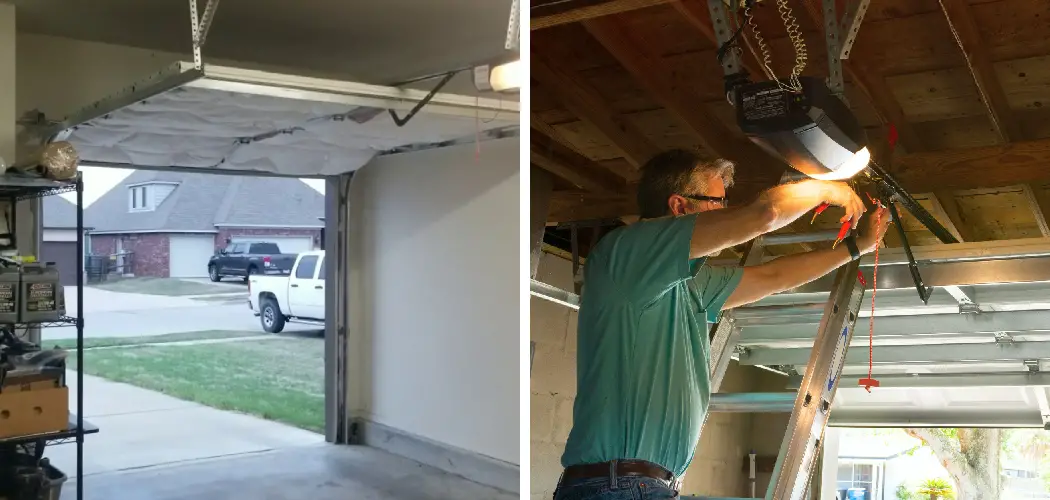Garages are the place we store our cars and all of our tools, so it’s essential to have a garage door that works properly. However, if your garage door is jerky when you open and close it, don’t worry—there are a few things to fix. In this article, we’ll outline some of the most common causes of jerky garage doors and provide solutions on how to fix a jerky garage door. Keep reading for more information!

It is not uncommon for garage doors to become jerky over time. Many factors can contribute to this, such as weather changes, loose hardware, or general wear and tear. If your garage door is jerky, you can do a few things to fix it.
Summary: If your garage door is jerking or moving unevenly, there are a few potential reasons why. First, check for any obstructions in the track. If there is nothing in the way, the issue may be with the spring tension or the opener’s settings. Adjusting these requires careful attention and possibly specialized tools, so it may be best to call a professional repair service.
Common Reasons Why Your Garage Door Is Jerking
1. Worn Out Rollers:
One of the most common reasons garage doors jerk is because the rollers are worn out. Over time, the rollers can become misshapen or damaged, which will cause them to catch on the tracks and make the door difficult to open and close smoothly.
2. Incorrectly Adjusted Springs:
Garage door springs are designed to counterbalance the door’s weight, making it easier to open and close. However, if the springs are incorrectly adjusted, it can cause the door to jerk when opening or closing.
3. Broken or Disconnected Cables:
Garage door cables are responsible for transferring the power from the opener to the door. If they are broken or disconnected, it can cause the door to jerk or even stop working altogether.
4. Misaligned Tracks:
The tracks that the garage door rollers ride on can become misaligned over time. This can cause the door to jerk when opening or closing, as the rollers will catch on the tracks.
5. Dirty or Obstructed Sensors:
The sensors on a garage door opener are responsible for detecting obstacles in the door’s path. If they are dirty or obstructed, it can cause the door to stop abruptly or even reverse direction, which can be extremely dangerous.

6. Worn Out Gears:
The gears in a garage door opener can become worn out over time. This can cause the door to jerk or stall when opening or closing.
7. Remote Issues:
If the remote control that operates your garage door is not working correctly, it can cause the door to jerk. This is because the remote signals the opener to tell it when to open and close the door.
8. Electrical Problems:
Garage door openers are electrical devices so that they can be susceptible to electrical problems. For example, if the opener is not receiving enough power, it can cause the door to jerk when opening or closing.
9. Improper Maintenance:
If your garage door is not maintained correctly, it can cause it to jerk or even break down completely. Regular inspections and maintenance by a qualified technician can help to prevent this from happening.
10. Weather-Related Damage:
Extreme weather conditions can cause garage doors to jerk. This is because the extreme temperatures can cause the metal tracks to expand or contract, which can throw off the alignment of the rollers.
If your garage door is jerking when you try to open or close it, there are several potential causes. In some cases, the problem can be resolved quickly and easily with troubleshooting. But in other cases, you may need to call a professional for repairs or replacement parts.
A Step by Step Guide on How to Fix a Jerky Garage Door
A jerky garage door can be not only frustrating but also a potential safety hazard. A smooth-operating garage door is essential for the convenience and security of your home. Fortunately, there are several steps you can take to fix a jerky garage door. In this guide, we will walk you through the process, step by step.
Step 1: Inspect the Tracks
The first thing you should do when trying to fix a jerky garage door is to inspect the tracks. Look for any debris, such as dirt, leaves, or small objects, that may be obstructing the smooth movement of the door. If you find any, use a brush or a vacuum cleaner to remove the debris. Additionally, check for any dents or bends in the tracks. If you notice any damage, use a rubber mallet to gently straighten the tracks.
Step 2: Lubricate the Moving Parts
Lack of lubrication can cause a garage door to operate jerkily. Apply a silicone-based lubricant to all the moving parts of the door, including the rollers, hinges, tracks, and springs. Be sure to wipe off any excess lubricant to prevent it from dripping onto the floor.
Step 3: Tighten Loose Hardware
Over time, the hardware of your garage door may become loose, leading to jerky movements. Inspect all the nuts, bolts, and screws that hold the various components of the door together. Use a wrench or screwdriver to tighten any loose hardware. Be cautious not to overtighten, as it may cause further damage.
Step 4: Check the Balance
An unbalanced garage door can also result in jerky operation. Disconnect the automatic opener by pulling the emergency release handle. Manually open the door halfway and then let go. If it stays in place, it is properly balanced. However, if it starts to slide down or rise up, it means the door is unbalanced. In this case, you will need to adjust the tension of the springs. It is recommended to seek professional help for adjusting garage door springs, as they are under high tension and can be dangerous to handle without proper knowledge and tools.
Step 5: Inspect and Replace Worn Rollers
Worn-out rollers are a common cause of jerky garage door movement. Examine the rollers carefully, looking for signs of wear, such as cracks or chips. If you notice any damage, it is best to replace the rollers. Remove the old rollers by removing the brackets that hold them in place. Install the new rollers and secure them with the brackets.
Step 6: Check the Cables
Inspect the lifting cables of the garage door for fraying or signs of wear. If you notice any damage, it is crucial to replace the cables immediately. Garage door cables are under high tension and should only be replaced by a professional technician for safety reasons.
Step 7: Test the Automatic Opener
After performing the necessary repairs and adjustments, reconnect the automatic opener and test the garage door. Open and close it a few times to ensure it operates smoothly and without jerking. If the door still exhibits jerky movements, you may need to consult a professional garage door technician to diagnose and resolve the issue. Step 8: Inspect the Weatherstripping
In some cases, worn or damaged weatherstripping can cause a garage door to operate jerkily. Inspect the weatherstripping along the bottom of the door and along the sides. If you notice any cracks, gaps, or signs of wear, it’s time to replace the weatherstripping. Measure the length needed and purchase a replacement weatherstripping kit from a hardware store. Remove the old weatherstripping and install the new one according to the manufacturer’s instructions.
Step 9: Check the Garage Door Opener Settings
If you have a garage door opener, its settings could be contributing to the jerky operation. Take a look at the settings and make sure they are properly adjusted. The force and travel limits are particularly important. If the force is set too high, the door may jerk or stop abruptly during operation. Adjust the force settings according to the manufacturer’s instructions to ensure smooth and consistent movement.
Step 10: Inspect the Garage Door Springs
The springs play a crucial role in the smooth operation of the garage door. If you have torsion springs or extension springs, inspect them for signs of wear, rust, or damage. If you notice any issues with the springs, it is recommended to hire a professional garage door technician to handle the repairs or replacements. Dealing with garage door springs can be dangerous and requires specialized knowledge and tools.
Step 11: Realign the Garage Door Sensors
If your garage door has safety sensors, they could be misaligned, causing the door to operate jerkily or stop abruptly. Inspect the sensors to ensure they are properly aligned and free from any obstructions. Clean the sensors with a soft cloth to remove any dirt or debris. If necessary, use a level to adjust the alignment of the sensors, making sure they face each other directly. Refer to the manufacturer’s instructions for detailed guidance on sensor alignment.
Step 12: Test the Manual Operation
In addition to testing the garage door with the automatic opener, it’s important to check its manual operation as well. Disconnect the automatic opener from the door and attempt to open and close it manually. Pay attention to any jerking or resistance during the process. If the door still exhibits jerky movement, it may indicate a mechanical issue that requires professional attention.
Step 13: Regular Maintenance
To prevent future jerky operation and maintain the smooth performance of your garage door, it’s essential to establish a regular maintenance routine. Clean the tracks and lubricate the moving parts at least twice a year. Inspect the hardware, cables, and springs periodically for signs of wear or damage. Address any issues promptly to avoid further damage and ensure the safe operation of your garage door.
By following these steps and performing regular maintenance, you can effectively fix a jerky garage door and improve its overall performance. However, it’s important to note that certain repairs, such as dealing with springs or complex mechanical issues, should be left to trained professionals. Prioritize your safety and consult a garage door technician whenever necessary.
What Happens if a Garage Door Spring Breaks?
Garage door springs are under much tension, and they can break without warning. If your garage door is suddenly jerky or doesn’t open, it may be because one of the springs has broken. It is best to call a professional to fix the spring in most cases. They will know how to release the tension so that no one gets hurt safely. Trying to fix a broken garage door spring yourself could be dangerous.
If you have a manual garage door, you will need a lever to open and close it. When one of the springs breaks, it can create too much tension on the other spring, making it difficult to open and close the door. You may need to use two levers to get the door to move.
If you have an automatic garage door, it will likely not open if one of the springs breaks. You will need to call a professional to fix the garage door spring.
Conclusion
A garage door opener is one of the most used devices. But unfortunately, it’s often taken for granted until it breaks. If your garage door opener starts jerking, follow this article on how to fix a jerky garage door to help you improve it before calling a technician.
I am Rick. I grew up helping my dad with his handyman service. I learned a lot from him about how to fix things, and also about how to work hard and take care of business. These days, I’m still into fixing things- only now, I’m doing it for a living.
I’m always looking for new ways to help people grow and develop. That’s why I have created this blog to share all my experience and knowledge so
that I can help people who are interested in DIY repair.

